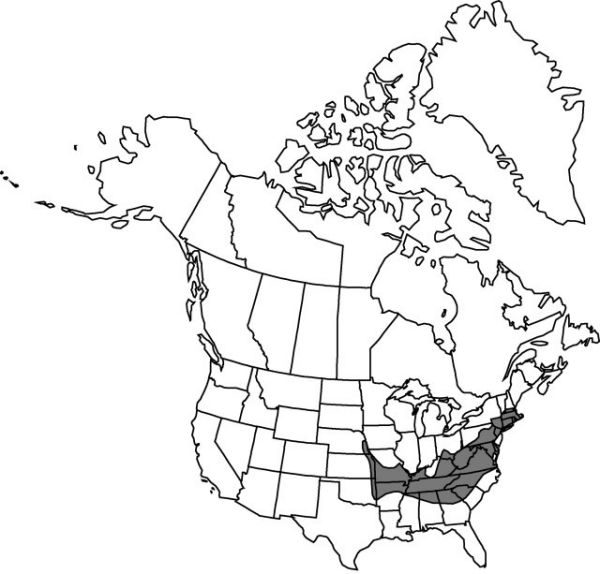familyOrchidaceae
subfamilyOrchidaceae subfam. Cypripedioideae
genusCypripedium
speciesCypripedium parviflorum
Cypripedium parviflorum var. parviflorum
Common names: Small yellow lady’s-slipper
Bracts: abaxial surface of distalmost sheathing bract (and often the next) densely and conspicuously silvery-pubescent when young (later sometimes glabrescent). Leaves 4–5, rather evenly spaced along stem, alternate, spreading; blade orbiculate to lance-elliptic to ovate or obovate, 9–19 × 2.5–9 cm. Flowers 1–2, small, scent moderate to faint, rose or musty; sepals and petals usually minutely but densely spotted with reddish brown or madder and appearing uniformly dark, rarely only coarsely spotted and blotched; lip oblance-ovoid to calceolate (slipper-shaped), 22–34 mm; orifice 12–19 mm.
Phenology: Flowering Apr–Jun.
Habitat: Mesic to dry deciduous and deciduous-hemlock forests, usually on slopes
Elevation: mostly 0–1200 m
Distribution
Loading map...

Ala., Ark., Conn., Del., Ga., Ill., Kans., Md., Mass., Mo., Nebr., N.J., N.Y., N.C., Ohio, Okla., R.I., Tenn., Va.
Discussion
Selected References
None.
Lower Taxa
None.